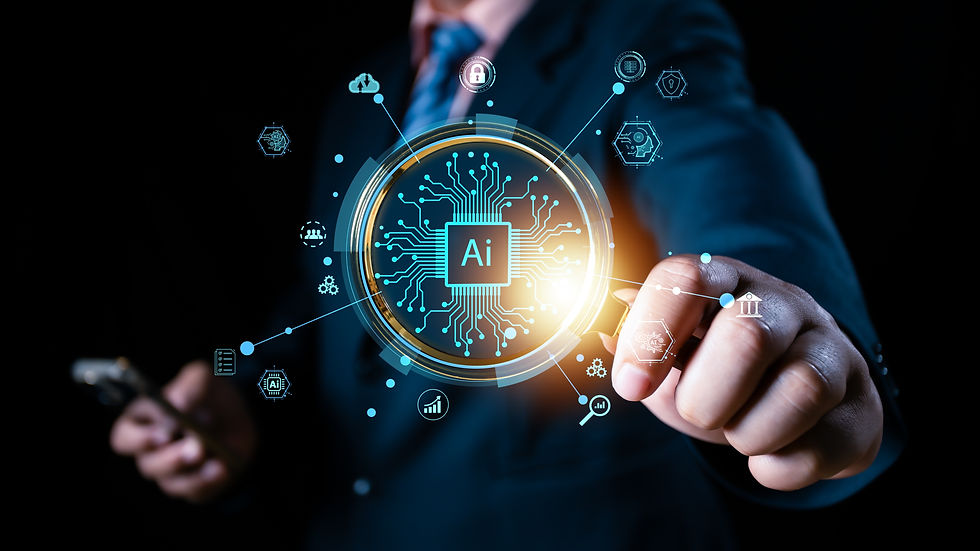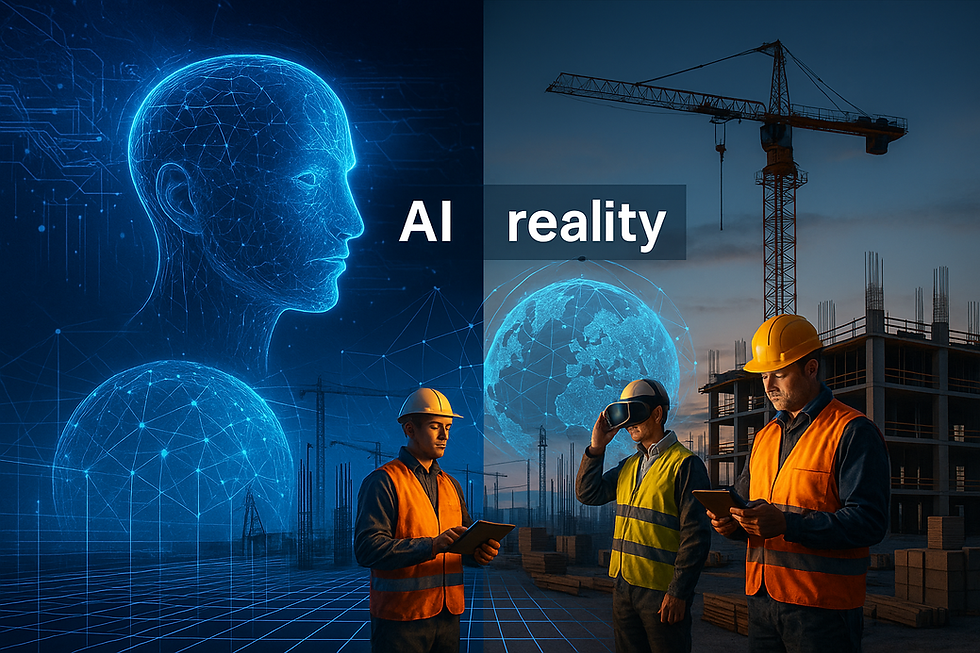Debunking the Myths: The Truth About AI in Construction
- Rodaina Aboul Hosn

- Jul 30, 2024
- 3 min read

Artificial Intelligence (AI) has revolutionized numerous industries, and construction is no exception. However, despite its growing adoption, many myths and misconceptions about AI persist. These myths can hinder the acceptance and effective utilization of AI technologies. In this blog post, we'll debunk some of the most common myths surrounding AI in construction, shedding light on its true potential and benefits.
Myth 1: AI Will Replace Human Jobs
Reality: AI Augments Human Capabilities
One of the most prevalent myths is that AI will replace human jobs, leading to widespread unemployment. In reality, AI is designed to augment human capabilities, not replace them. AI can handle repetitive tasks, allowing construction professionals to focus on more complex and creative aspects of their work. For instance, AI can automate data analysis and project management tasks, enabling engineers and project managers to make more informed decisions and improve overall productivity.
Myth 2: AI Is Too Complex and Expensive
Reality: AI Solutions Are Becoming More Accessible
Another common misconception is that AI is too complex and expensive for most construction companies to implement. While it's true that early AI technologies required significant investment and expertise, advancements in technology have made AI solutions more accessible and affordable. Many AI tools and platforms are now user-friendly and scalable, allowing construction firms of all sizes to integrate AI into their operations without breaking the bank. Moreover, the long-term benefits of AI, such as increased efficiency and reduced costs, often outweigh the initial investment.
Myth 3: AI Can Only Be Used for Large-Scale Projects
Reality: AI Benefits Projects of All Sizes
Some believe that AI is only suitable for large-scale construction projects with substantial budgets and resources. However, AI technologies can benefit projects of all sizes. Small and medium-sized projects can leverage AI for tasks such as project scheduling, risk management, and resource optimization. By using AI-driven tools, even smaller construction firms can enhance their project outcomes, improve safety, and streamline operations.
Myth 4: AI Is Not Reliable
Reality: AI Provides Accurate and Consistent Results
Skeptics often argue that AI is not reliable and can make mistakes. While no technology is perfect, AI systems are designed to provide accurate and consistent results by learning from vast amounts of data. AI algorithms continuously improve over time, becoming more precise and reliable. In construction, AI can predict project risks, monitor site conditions, and optimize workflows with a high degree of accuracy, helping to minimize errors and enhance project performance.
Myth 5: AI Will Eliminate the Need for Human Judgment
Reality: AI Supports, Not Replaces, Human Judgment
There is a misconception that AI will eliminate the need for human judgment and decision-making. On the contrary, AI supports human judgment by providing valuable insights and data-driven recommendations. In construction, AI can analyze complex datasets, identify patterns, and suggest optimal solutions. However, the final decisions still rest with human experts who can interpret the AI-generated insights and make informed choices based on their experience and expertise.
Myth 6: Implementing AI Is Too Disruptive
Reality: AI Integration Can Be Seamless and Gradual
Many construction professionals fear that implementing AI will be too disruptive to their existing processes and workflows. However, AI integration can be seamless and gradual. Companies can start by adopting AI for specific tasks or phases of a project, gradually expanding its use as they become more comfortable with the technology. ConstrucTech Services, for example, offers tailored AI solutions that can be integrated step-by-step, minimizing disruption and ensuring a smooth transition.
Myth 7: AI Is a Black Box and Lacks Transparency
Reality: AI Can Be Interpretable and Transparent
A common myth is that AI operates as a "black box," making decisions that are opaque and difficult to understand. While some AI models can be complex, they still provide clear and functional mathematical relationship between model inputs and outputs. Moreover, many modern AI systems are designed to be interpretable and transparent allowing users to understand how AI arrives at its conclusions, making the decision-making process more transparent. In construction, this transparency is crucial for gaining trust and ensuring that AI recommendations are aligned with project goals and regulatory requirements.
Conclusion
AI holds immense potential to transform the construction industry, enhancing efficiency, safety, and project outcomes. By addressing these common myths, we can better understand the true capabilities of AI and how it can be effectively utilized in construction. Embracing AI with an open mind and a clear understanding of its benefits will enable construction firms to stay competitive and drive innovation in their projects.
ConstrucTech Services is committed to helping you navigate the world of AI and leverage its full potential. Contact us today to learn how we can assist you in integrating AI into your construction projects and dispelling any myths you might have heard.



